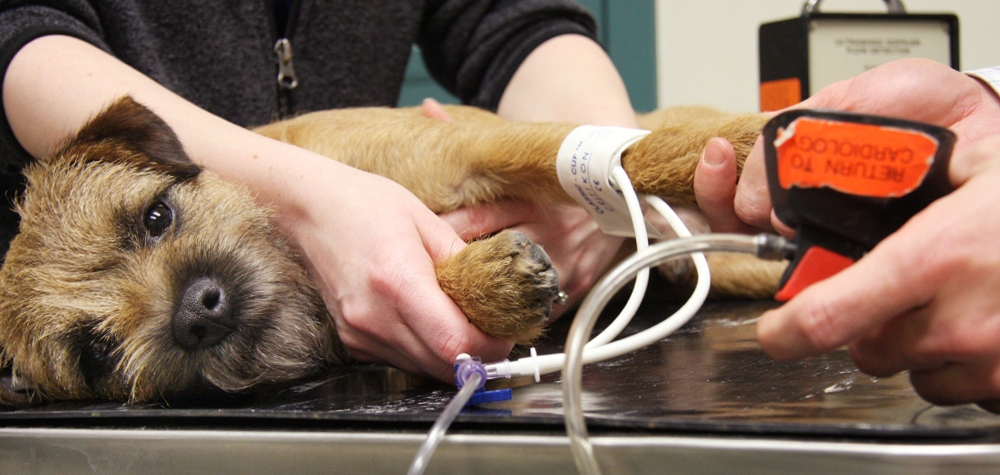What You Need to Learn About Vet Solutions: A Summary of Diagnostic Tools and Procedures
Veterinary services play a vital duty in keeping the health and wellness of animals. Regular exams can expose concealed health and wellness worries early. Numerous analysis devices and treatments, such as blood examinations and imaging techniques, supply necessary insights right into an animal's wellness. Understanding these techniques is vital for animal proprietors. What particular analysis procedures are most frequently used, and exactly how can they influence an animal's therapy strategy?
Importance of Routine Vet Exams
While numerous family pet proprietors might undervalue the value of regular veterinary examinations, these consultations are important for preserving a pet's total health. Routine sees to the vet enable early detection of prospective health and wellness concerns prior to they escalate into severe troubles. Normal check-ups frequently include vaccinations, which are necessary for protecting against transmittable diseases that could significantly affect a family pet's health. In addition, these consultations give a possibility for vets to analyze the animal's weight, oral wellness, and total problem, guaranteeing that the family pet is prospering. Throughout these sees, family pet owners can also obtain beneficial suggestions on diet regimen, workout, and precautionary care tailored to their details pet dog's demands.
Typical Diagnostic Procedures in Vet Medication
In veterinary medicine, exact medical diagnosis is crucial for reliable treatment. Common analysis treatments include blood screening strategies, advanced imaging technologies, and urinalysis, each playing a significant duty in determining health issues. Recognizing these approaches enhances the ability to give proper care for animal people.
Blood Checking Techniques
Blood testing strategies offer as vital diagnostic tools in vet medication, allowing vets to examine the health of pets accurately. These strategies involve accumulating blood samples to assess various parts, such as red and white blood cells, platelets, and biochemical markers. Common tests consist of complete blood matters (CBC), which review overall health and discover infections, and biochemical panels, which analyze organ feature and metabolic status. In addition, serological tests can determine specific illness via antibody detection. Blood testing is minimally intrusive and offers critical info that assists in diagnosing problems, checking health condition, and reviewing reactions to therapies. Overall, these methods play an important duty in making sure perfect look after pets and livestock alike.
Imaging Technologies Made Use Of
Diagnostic imaging modern technologies are crucial tools in vet medication, enhancing blood screening methods by supplying aesthetic understandings right into a pet's inner structures. Common imaging modalities include X-rays, which work for examining bone cracks and detecting foreign objects, and ultrasound, which permits real-time visualization of soft tissues and organs. Magnetic resonance imaging (MRI) provides comprehensive images of complicated anatomical areas, especially in neurological evaluations. Calculated tomography (CT) supplies cross-sectional pictures, improving diagnostic precision for different conditions. Each of these modern technologies aids vets in identifying ailments, intending therapies, and checking recuperation. By integrating imaging innovations, veterinary professionals can much better analyze a pet's wellness and make notified decisions concerning their treatment.
Urinalysis and Diagnostics
Urinalysis acts as a vital diagnostic tool in vet medicine, providing valuable understandings into an animal's total health and wellness and helping in the detection of numerous problems. This non-invasive procedure evaluates urine examples to evaluate kidney function, hydration standing, and metabolic conditions. Common parts taken a look at include details gravity, pH levels, sugar, proteins, and the visibility of blood or microorganisms. Unusual searchings for can suggest issues such as urinary system tract infections, diabetic issues mellitus, or kidney illness. To enhance analysis accuracy, urinalysis is usually executed in combination with other examinations, such as blood work and imaging research studies. Early detection with urinalysis can lead to timely treatments, improving the diagnosis for many vet individuals. Therefore, it is an important facet of complete veterinary care.
Recognizing Blood Tests and Lab Evaluation
Understanding blood examinations and laboratory evaluation is vital in vet medication as it aids in identifying numerous health conditions in pets. Different sorts of blood examinations provide necessary details about an animal's inner state, while analyzing laboratory results calls for careful consideration of many variables. This section will explore the kinds of blood tests offered and the relevance of their outcomes.
Sorts Of Blood Examinations
Blood examinations play an important role in vet medication, giving essential insights into an animal's health and wellness standing. Various kinds of blood tests are used, each offering various objectives. Full blood counts (CBC) evaluate general wellness and identify problems such as anemia or infection. Biochemical accounts evaluate organ function by measuring electrolytes and enzymes, supplying insights right into metabolic wellness. Serological examinations determine particular antibodies or pathogens, aiding in the diagnosis of infections or autoimmune conditions. Blood keying assurances risk-free transfusions, while coagulation tests gauge the blood's capacity to embolisms, important for procedures. These examinations collectively enhance diagnosis, therapy planning, and monitoring of a pet's wellness, showing the value of extensive lab analysis in vet treatment.

Translating Laboratory Outcomes
A complete analysis of laboratory results is essential for precise medical diagnosis and treatment in vet medication. Analyzing lab results needs an understanding of regular reference varieties and the value of deviations. Blood tests best site can disclose numerous health signs, such as organ feature, electrolyte equilibrium, and the visibility of infections. Vets have to consider the entire clinical photo, consisting like it of the pet's background, physical evaluation findings, and any signs offered. Variants in results might develop from variables such as age, type, and underlying health conditions. Laboratory outcomes ought to not be seen in isolation yet instead as part of an all-encompassing analysis technique. Precise analysis enables tailored treatment strategies and much better results for veterinary people.
Imaging Techniques: X-rays, Ultrasounds, and Beyond
Imaging strategies are crucial devices in veterinary medicine, offering crucial insights right into the health and health of pets. Among the most typically used approaches are Ultrasounds and x-rays. X-rays are indispensable for imagining bone structures, aiding veterinarians identify cracks, growths, or foreign things. This technique is quick and non-invasive, making it suitable for urgent situations.Ultrasounds, on the various other hand, utilize sound waves to create photos of soft tissues and organs. This technique is particularly useful for analyzing the heart, abdominal area, and reproductive organs, allowing veterinarians to analyze conditions like fluid buildup or organ abnormalities.Beyond X-rays and ultrasounds, advanced imaging methods such as computed tomography (CT) and magnetic vibration imaging (MRI) are increasingly made use of in veterinary method. These approaches provide thorough cross-sectional images, improving the precision of diagnoses and treatment strategies. Cancer Veterinary Near Me. On the whole, imaging techniques play a necessary duty in guaranteeing reliable vet care
The Role of Biopsies in Diagnosing Family Pet Wellness Issues
Precision in identifying health and wellness concerns in pets commonly pivots on making use of biopsies, which offer clear-cut details about tissue irregularities. A biopsy entails the elimination of a tiny sample of tissue for evaluation under a microscope, enabling veterinarians to determine different problems, consisting of infections, growths, and inflammatory illness. This analysis device is crucial for distinguishing in between benign and malignant developments, leading therapy decisions, and evaluating the seriousness of a condition.Biopsies can be done utilizing different methods, such as needle ambition, incisional biopsies, or excisional biopsies, relying on the place and sort of tissue involved. The option of technique might impact healing time and the quantity of cells collected. Ultimately, the information gleaned from a biopsy can lead to targeted treatments, improving results for pet dogs dealing with significant health obstacles. Vets emphasize the significance of this treatment in attaining precise medical diagnoses and efficient treatment strategies.
Advanced Diagnostic Equipment: Endoscopy and CT Scans

Advanced diagnostic devices, such as endoscopy and CT scans, play a necessary role great site in modern-day veterinary medication, providing non-invasive approaches to picture internal frameworks and diagnose numerous conditions in family pets. Endoscopy involves making use of a flexible tube outfitted with a cam, enabling veterinarians to check out the intestinal tract and breathing system directly. This technique can expose problems such as tumors, international bodies, or inflammation, making it possible for targeted therapy plans.CT scans, on the other hand, use advanced imaging innovation to produce thorough cross-sectional photos of the body (CT Scans For Dogs). This approach is particularly helpful for evaluating complicated frameworks like the brain, back, and joints. By giving high-resolution pictures, CT scans assist vets in identifying problems that may not appear via traditional radiography. Together, these advanced tools enhance diagnostic accuracy, improve treatment outcomes, and ultimately contribute to better overall pet health management

Translating Test Outcomes: What Pet Owners Must Know
Understanding examination results can be a tough task for pet dog owners, particularly after sophisticated treatments like endoscopy and CT scans have actually been done. Analyzing these results needs an understanding of medical terms and a clear understanding of what the searchings for suggest concerning the pet's health and wellness. Vets commonly provide descriptions, yet the complexity of the results can still cause confusion.Pet owners ought to proactively take part in discussions with their veterinarians, asking concerns to make clear any uncertainties. It is important to understand typical versus irregular results and the implications for the family pet's therapy strategy. In addition, recognizing that some results may call for additional screening or monitoring can assist proprietors remain educated about their pet's health and wellness trip. Ultimately, a collaborative method between animal owners and veterinary experts promotes much better health and wellness results and improves the general care experience for animals.
Often Asked Concerns
Exactly how Do I Select the Right Veterinary Clinic for My Pet?
Choosing the right veterinary facility entails looking into neighborhood choices, evaluating credentials, seeing centers, and examining personnel interactions (CT Scans For Dogs). Focusing on suggestions from trusted resources can aid ensure the finest care and setting for a pet dog's health and wellness requirements
What Should I Do if My Animal Refuses to head to the Veterinarian?
When a family pet refuses to go to the veterinarian, it's a good idea to stay tranquil, usage treats or playthings to lure them, and think about scheduling a home visit if anxiousness continues. Patience and favorable reinforcement are key.
Exist Telehealth Options for Veterinary Providers?
Telehealth alternatives for veterinary solutions are increasingly available, enabling pet dog proprietors to seek advice from veterinarians remotely. These solutions enable conversations concerning wellness problems, advice on minor disorders, and follow-ups without requiring to see a facility.
Exactly how Commonly Should My Family Pet Have Oral Examinations?
The frequency of oral exams for pet dogs commonly relies on their age and type. Normally, veterinarians suggest annual dental evaluations, although some pets may call for more frequent brows through to keep excellent dental health and wellness.

What Are the Expenses Connected With Veterinary Diagnostics?
The costs related to vet diagnostics can vary widely, normally varying from basic tests like blood work to sophisticated imaging strategies. Variables influencing costs consist of the clinic's location, devices utilized, and details examinations required for each family pet. Vet solutions play an important function in preserving the health of family pets. While several animal owners may take too lightly the value of routine vet examinations, these consultations are necessary for maintaining an animal's general health and wellness. Furthermore, these visits supply a chance for veterinarians to evaluate the animal's weight, dental wellness, and total problem, making sure that the family pet is prospering. Precision in diagnosing health concerns in pet dogs commonly pivots on the use of biopsies, which offer definitive details concerning cells irregularities. Additionally, recognizing that some outcomes might require further screening or tracking can help proprietors remain notified regarding their pet's wellness trip.